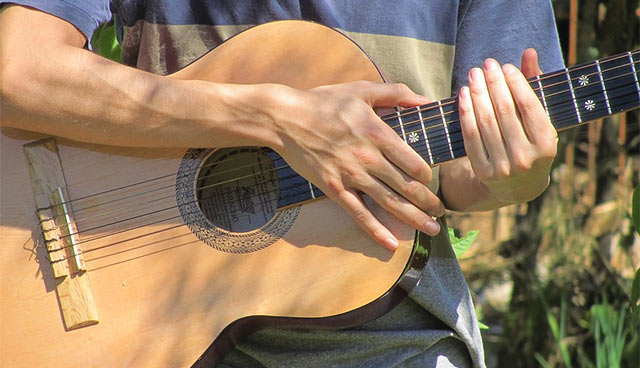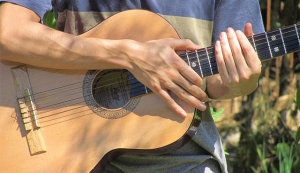How to improve your guitar Finger Dexterity, Placement, and Technique.
Are you having trouble getting clean notes or chords without dead notes? Are your chord changes awkward and slow?

If so, I have some advice that should help. The first piece of advice that I will offer to you concerning guitar finger dexterity and placement is that you don’t give up too soon. You will have a breakthrough. It might be in the form of a better guitar or an action adjustment, or by working on technique.
I have seen and heard it all over the past 40 years that I have taught guitar lessons. Excuses like my fingers are too fat, i am double jointed, i get cramps in my hands, and on and on…
Here are some beginner guitar tips that you can use to overcome those problems. These will work as long as you have some function in your fretting hand.
1. Be sure that your guitar has good strings and that it is set up properly. If you don’t know, find a reputable guitar tech.
2. Pay attention to your posture. Use a chair or stool that supports you comfortably. Don’t lean over, lay the guitar on your lap, or lay on the couch with your guitar.
3. Thumb position is very important. Keep your fretting hand thumb centered between your index and middle fingers. The thumb does not have to be planted in the center of the back of the neck unless you are playing a classical guitar. Your thumb should move up and down depending on the reach needed.
4. Bend your knuckles, not your wrist. Keep your wrist as straight as possible. Create space between your palm and the high E string.
5. Exaggerate the angle of your fingers so that they are almost 90 degrees to the fretboard.
6. Push the strings down with the fingertips. Do not lay your fingers flat.
7. If you have long fingernails on your fretting hand, cut them.
8. I don’t recommend any particular exercises other than the music that you are trying to play. Start with simple melodies and practice the same melodies with all four fingers.
9. When attempting to play chords, use the same techniques as described above. There are some exceptions such as barre chords or some chord shapes that require you to hold down more than one string. Try alternate fingerings for chords.
10. Finally, be patient. Buzzing notes and sore fingertips will pass. Keep your hands on the guitar as often as possible and in time you will have success. Remember, you can always play slide.




